In June 1963, a little over six decades ago, South Vietnam was paralysed by what has since become known as the Buddhist crisis. The US presence in Vietnam was still relatively small and confined to thousands of military "advisors". John F Kennedy was in the White House. In Saigon, journalists like David Halberstam and Neil Sheehan were making names for themselves while creating headaches back home for Kennedy's administration.
South Vietnam was run by the staunchly anti-communist US ally, President Ngo Dinh Diem.
President Diem's regime had all the hallmarks of a family dynasty and was becoming increasingly tyrannical. His three brothers were important figures in his rule.
The Ngo family story began in the former Nguyen Dynasty capital of Hue in central Vietnam and this is where the Buddhist Crisis began.
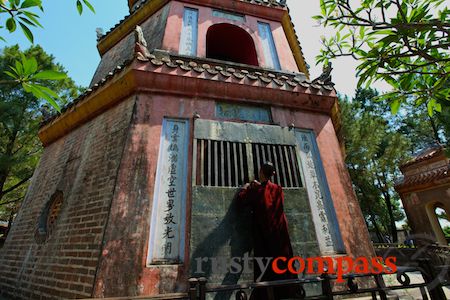
Photo: Mark BowyerThien Mu Pagoda, Hue
One of Diem's brothers, much feared Ngo Dinh Nhu, was President Diem's right-hand man and ran the secret police. He was a brutal enforcer. Another brother, Ngo Dinh Thuc, was the Catholic Archbishop of Hue and the most senior cleric in Vietnam. He was a politically engaged churchman. Yet another brother, Ngo Dinh Can, was the regime's despotic strongman in Hue. All four Ngo brothers were key players in the Buddhist crisis. Only Archbishop Thuc survived it.
The ramifications of the Buddhist crisis were to be enormous. It ended only when President Diem and his brother Nhu were assassinated in a US sanctioned coup in November 1963. In a bizarre twist, President Kennedy was assassinated weeks later.
Many historians believe the overthrow of Diem presaged the massive US military escalation that took place in 1965, and then more than ten catastrophic years of war that followed. The US turned on an unpalatable ally when they turned on Diem, and then became inextricably involved in a messy, distant war.
The first incidents of the Buddhist crisis occurred when President Diem's brother, Hue based Archbishop Ngo Dinh Thuc, urged that the display of Buddhist flags be forbidden during Vesak, one of the most important days in the Buddhist calendar.
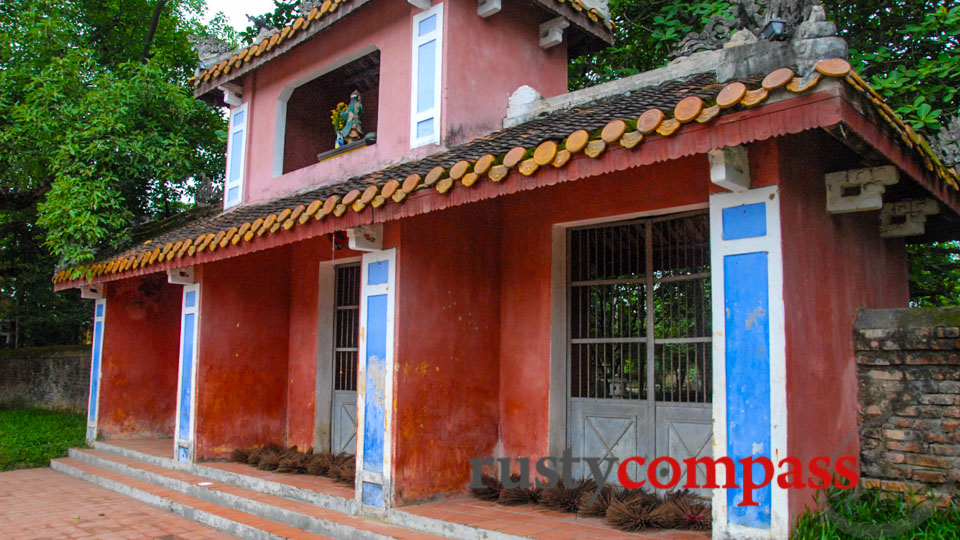
Photo: Mark BowyerHue's revered Dieu De Pagoda was also heavily involved in the Buddhist protests.
Vietnam was and is a majority Buddhist country. Turning on the Buddhist population seemed a suicidal path for the Diem regime to pursue. Ultimately it was.
Hue's Buddhists protested the flag decision and their protests prompted an outrageously disproportionate response that saw 8 killed by Ngo Dinh Can's heavy-handed security forces.
Perhaps the best known event of the Buddhist crisis was the self immolation of Hue monk Thich Quang Duc, on 11 June 1963 at a busy Saigon street corner.
Thich Quang Duc was protesting the discriminatory policies of the Diem regime. AP Bureau Chief Malcolm Browne captured the self-immolation. His prize winning image created a crisis for the US government, an ally of the Diem administration. It became one of the most iconic images of the Vietnam War. You can view Browne's image here.
New York Times Correspondent David Halberstam wrote of witnessing the self immolation in his book The Making of a Quagmire,
"I was to see that sight again, but once was enough. Flames were coming from a human being; his body was slowly withering and shrivelling up, his head blackening and charring. In the air was the smell of burning human flesh; human beings burn surprisingly quickly. Behind me I could hear the sobbing of the Vietnamese who were now gathering. I was too shocked to cry, too confused to take notes or ask questions, too bewildered to even think ... As he burned he never moved a muscle, never uttered a sound, his outward composure in sharp contrast to the wailing people around him."
Despite assurances from the Diem regime that action would be taken to ease the crisis, protests increased as did the violent responses of the Ngo family's security forces in Hue and Saigon.
A later protest at Saigon's Xa Loi pagoda resulted in a brutal crackdown instigated by Diem's brother Nhu. Some historians say the brutality of the crackdown, in which hundreds of monks and their supporters were arrested and an unknown number killed, did not have the approval of Diem himself.
Either way, US support for the Diem regime became untenable. President Kennedy openly expressed his alarm at the treatment of the Buddhist protestors. With US connivance, Diem's generals began to plot a coup against him. When they struck in November, Diem and Nhu were killed after being captured in a Catholic Church in Cholon. Their man in Hue, Ngo Dinh Can was captured and executed later in 1964.
The photos below mark out some of the places in Hue and Saigon connected to the Buddhist crisis and the demise of President Ngo Dinh Diem and his family.
Reminders of the crisis are plentiful and have official sanction. There's no harm in remembering the tyranny of the Diem regime.
A recent major expansion of the memorial remembering the self immolation of Thich Quang Duc in downtown Saigon is especially interesting. Visitors might even come away with the impression that the Buddhists were in common cause with the communist movement. That would be a stretch however, as post 1975 history shows.
So if you're looking out for landmarks from the Buddhist crisis, check out these places.
Hue
Quoc Hoc School, Hue -
An extraordinary place, Quoc Hoc or National School, schooled Ngo Dinh Diem and at different times revolutionary leaders and Diem rivals Ho Chi Minh, Vo Nguyen Giap and Le Duan, Pham Van Dong and others.
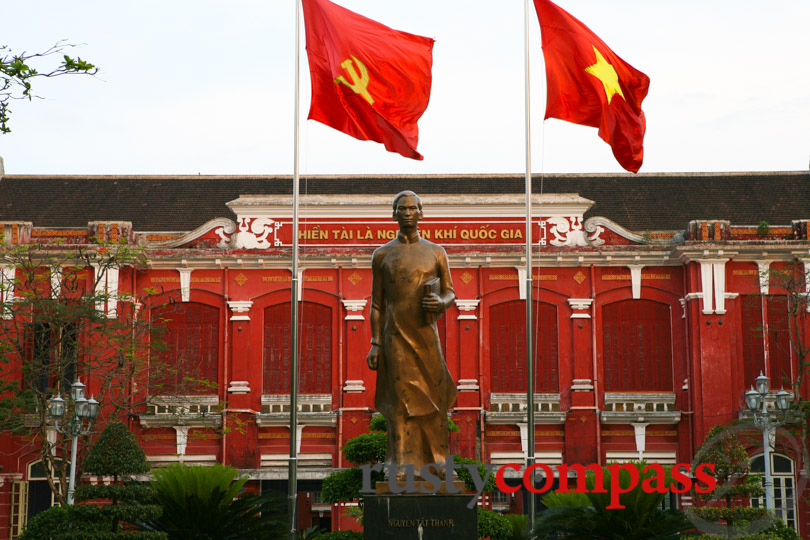
Photo: Mark BowyerHue's National School - with famed alumnus Ho Chi Minh in the foreground.
Thien Mu Pagoda
The most beautiful of Hue's pagodas, perched looking over the Perfume River, was also closely connected to monk Thich Quang Duc. The car Duc drove to his self immolation in Saigon is displayed at the back of the pagoda.
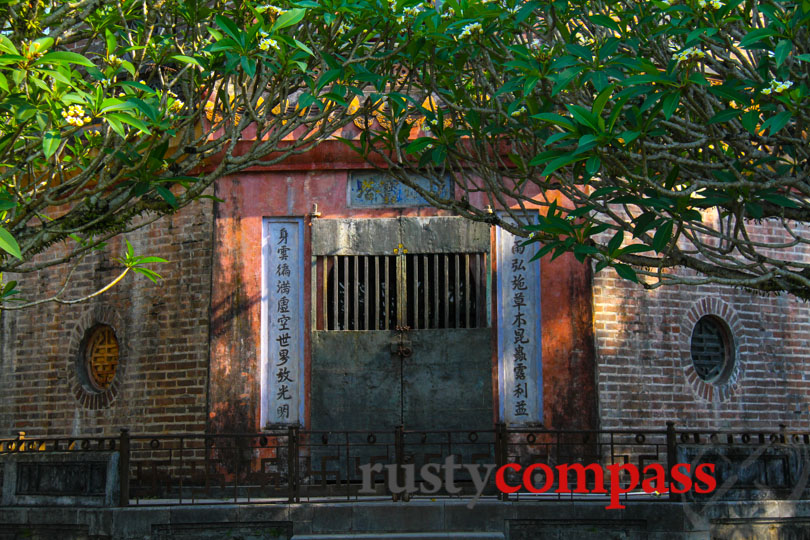
Photo: Mark BowyerThien Mu Pagoda, Hue
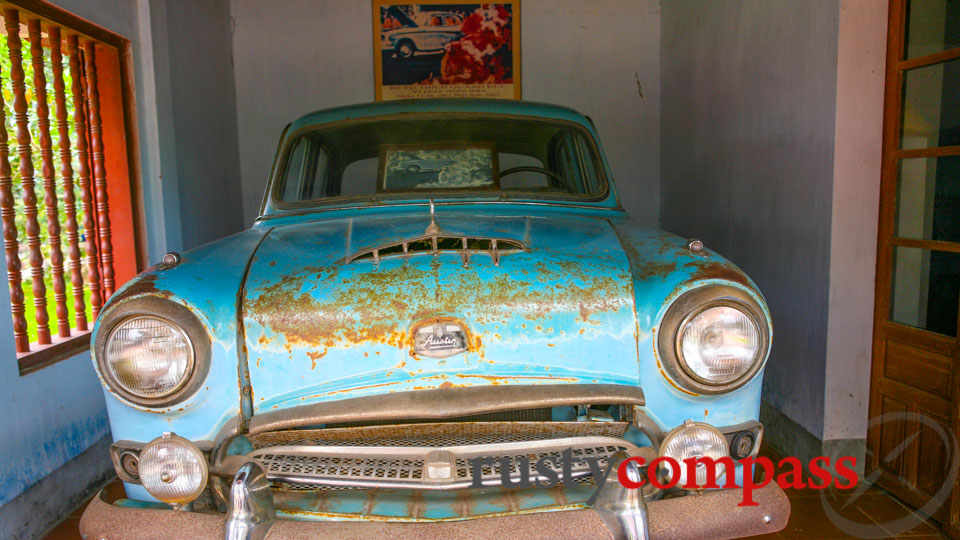
Photo: Mark BowyerThe Austin that Thich Quang Duc drove to his self immolation. Malcolm Browne's haunting photograph is behind the car.
Phu Cam Church - Hue
The Ngo family hails from Phu Cam village in Hue and Phu Cam Cathedral was a base for Ngo Dinh Thuc and his highly politically engaged Catholic hierarchy.
The current cathedral at Phu Cam was commissioned by Archbishop Thuc and designed by celebrated architect Ngo Viet Thu - the architect behind Saigon's Reunification Palace.
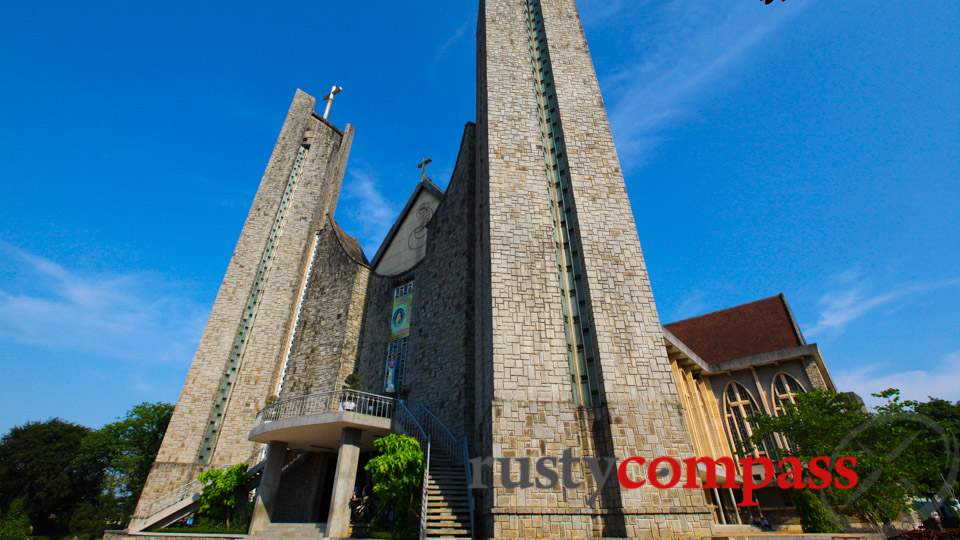
Photo: Mark BowyerThe distinctive Phu Cam Cathedral in Hue.
Truong Tien Bridge 8 May 1963 Monument
Right by Hue's Truong Tien Bridge stands a simple monument to the eight people killed on May 8th 1963 in the Hue crackdown that started the Buddhist Crisis.
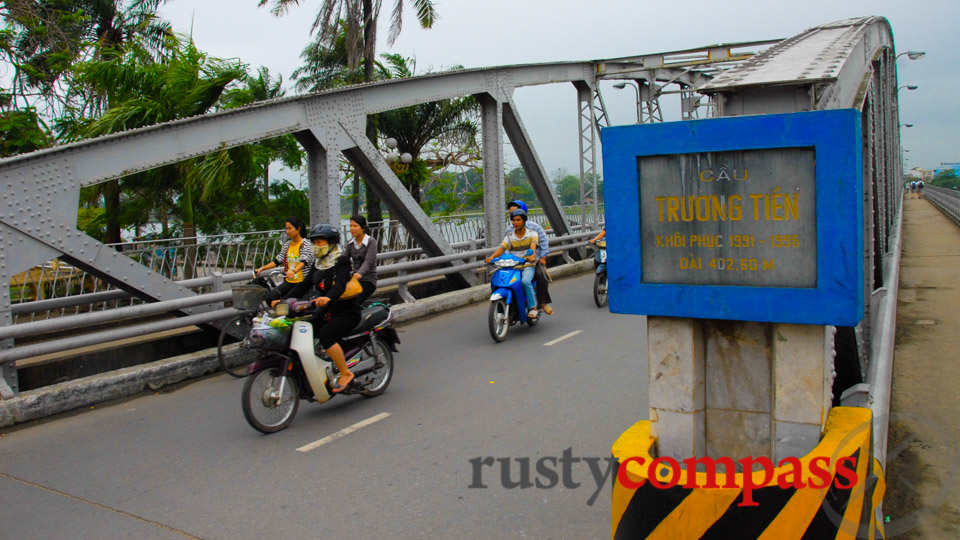
Photo: Mark BowyerTruong Tien Bridge Hue - by a monument to 8 Buddhist protestors murdered by Ngo Dinh Can's forces.
Ngo Dinh Can - the forgotten brother
Ngo Dinh Can is the least well known of the Ngo clan but he was an important player in the crisis. An argument might be made that his brutality on the streets of Hue was the trigger for the crisis.
A few hundred metres from the front of Phu Cam church is Can's former office, now a hotel. Down an alley nearby is Can's tomb. It looks fairly unkempt but some family members still tend it.
A little out of central Hue is Ngo Dinh Can's creepy abandoned residence. It's a rundown modernist classic that even Vietnamese seem to stay away from. I've never seen anyone else there. I'm not superstitious but this place feels haunted. Not far from the old mansion are the French bunkers used by Ngo Dinh Can to incarcerate and torture his many enemies - adding to the chilling feel of the area.
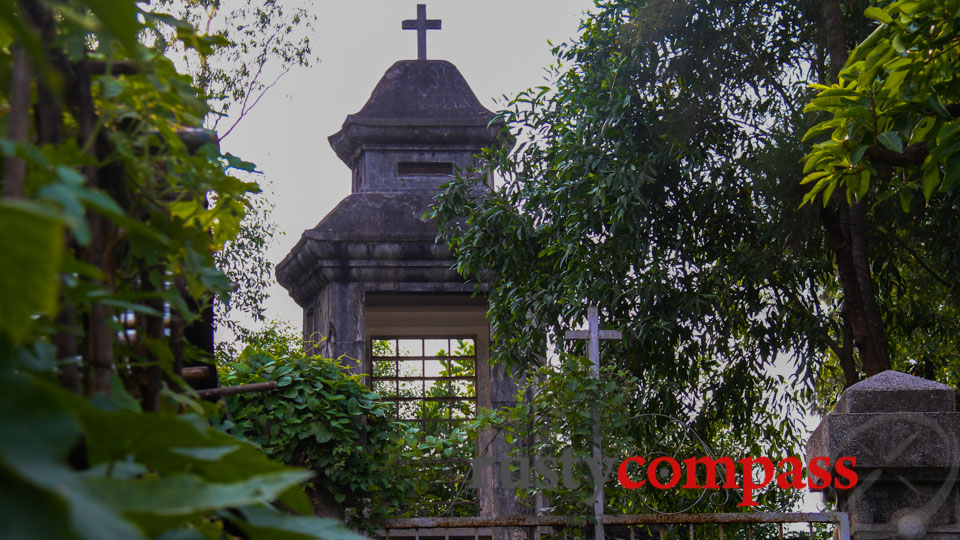
Photo: Mark BowyerTomb of Ngo Dinh Can, Hue.
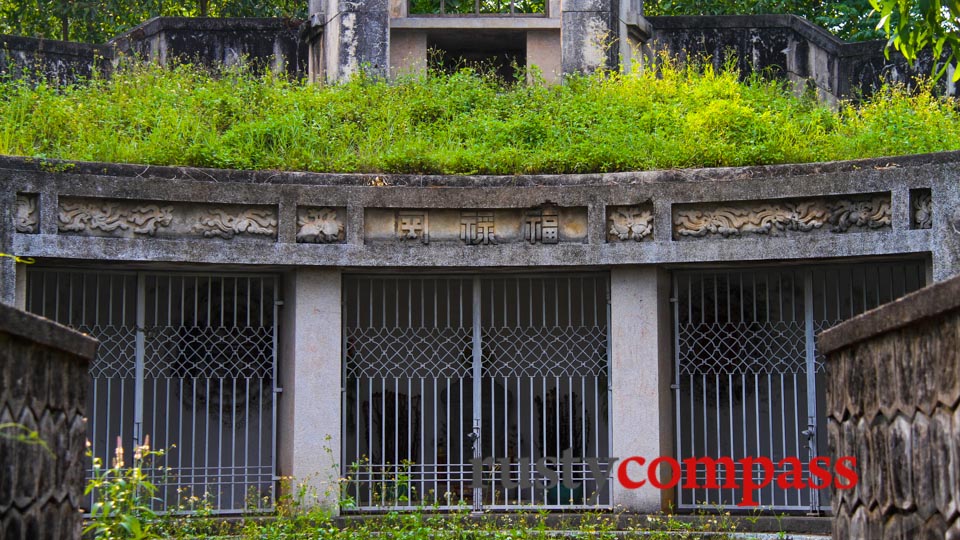
Photo: Mark BowyerThe unkempt tomb of Ngo Dinh Can, Hue
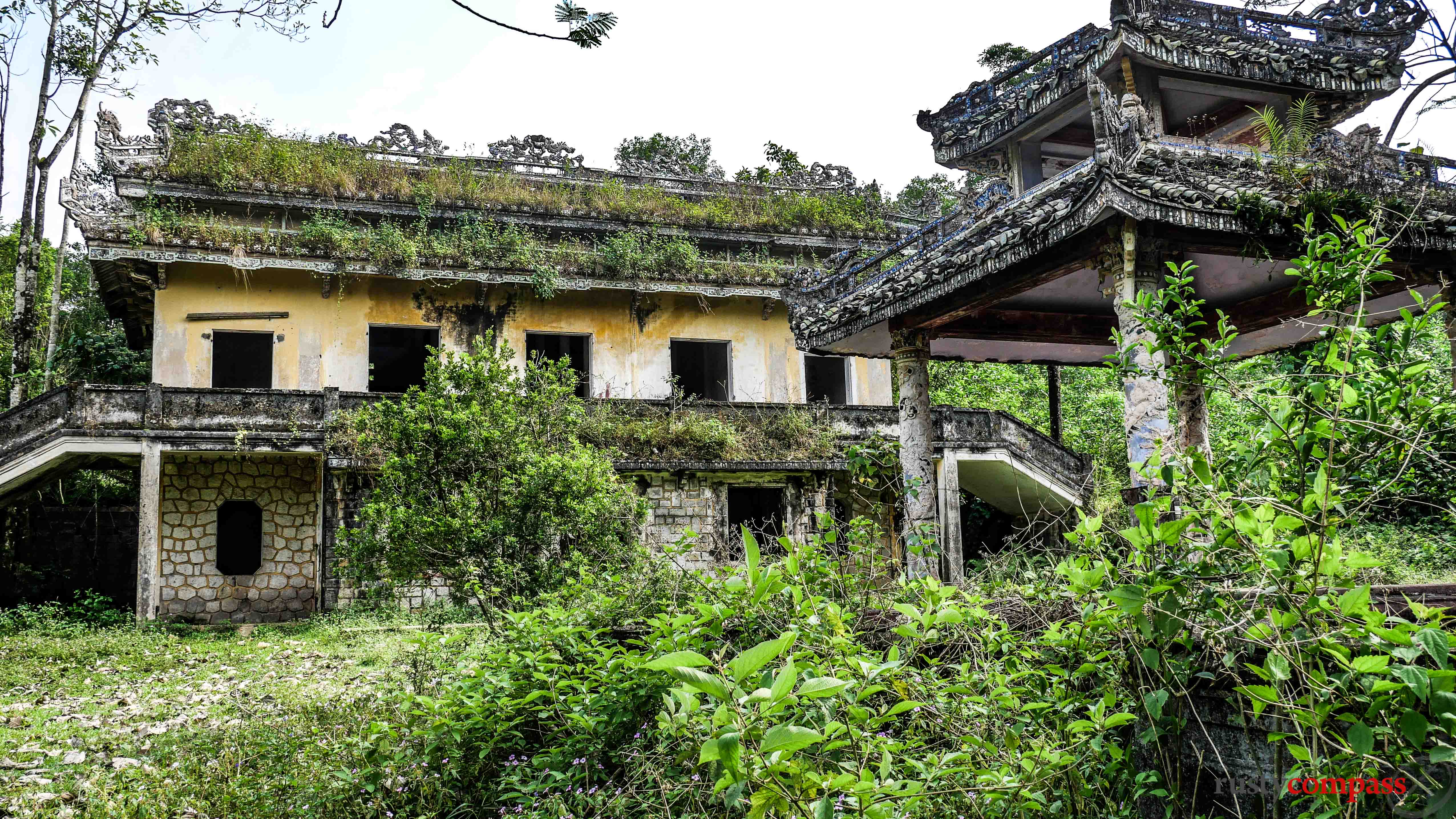
Photo: Mark Bowyer Ngo Dinh Can's spooky abandoned mansion - Hue
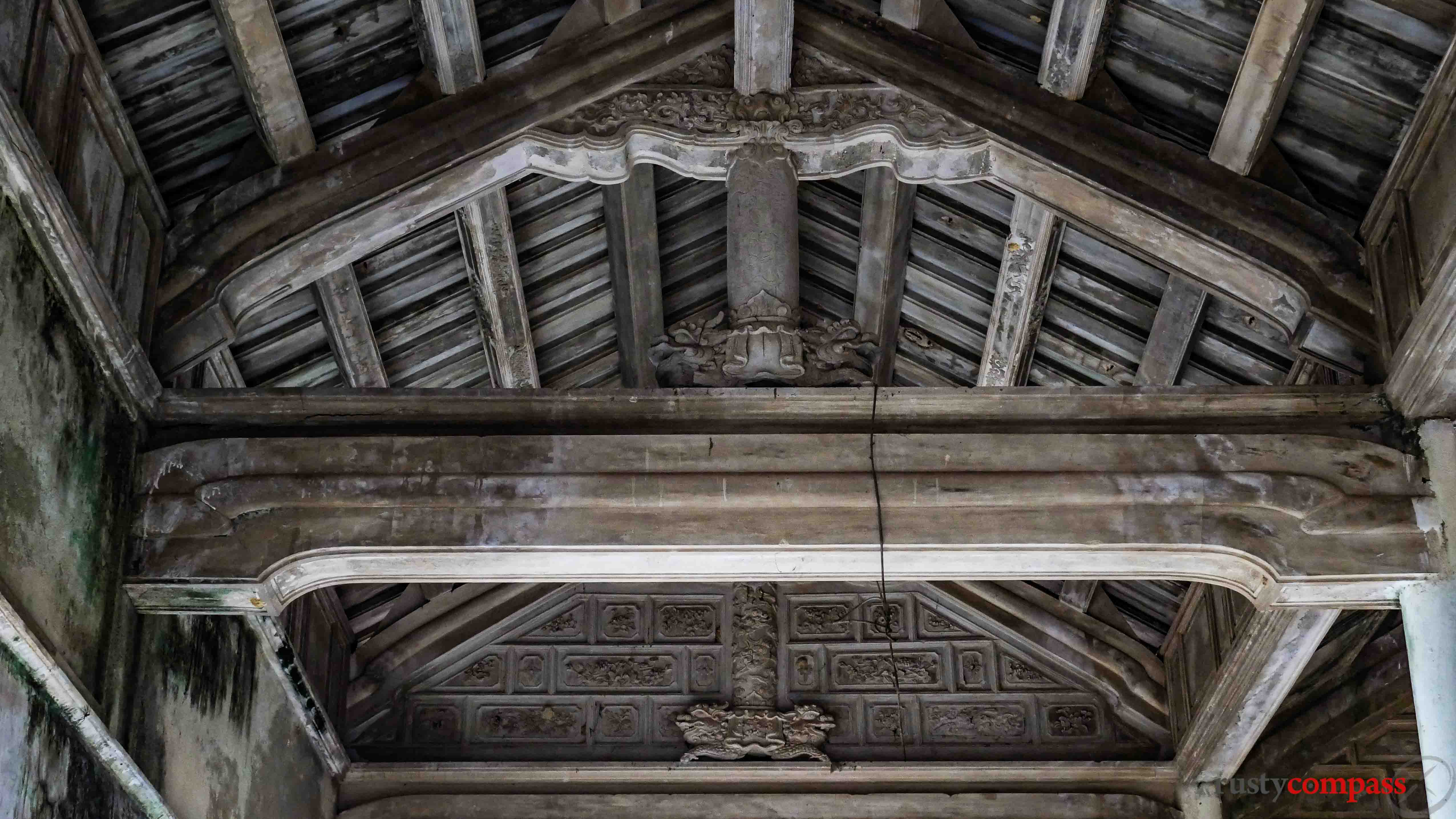
Photo: Mark Bowyer Roof detail a glimpse of the fomer opulence of tyrant Ngo Dinh Can's residence.
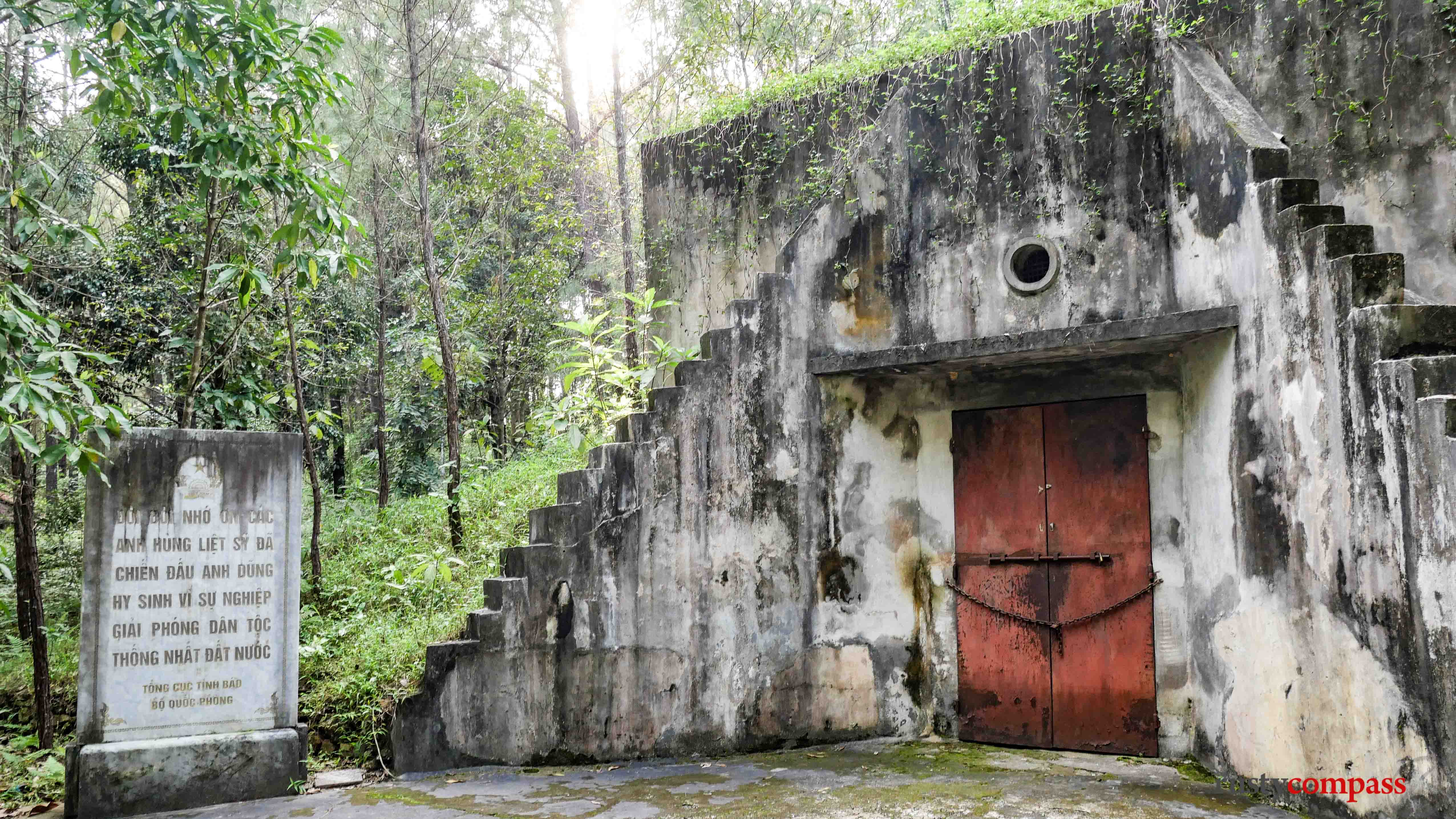
Photo: Mark Bowyer The old French bunkers that became Ngo Dinh Can's torture cells.
Saigon
Thich Quang Duc monuments
The original Thich Quang Duc monument at the corner of Cach Mang Thang Tam St and Nguyen Dinh Chieu St in Saigon's District 3 has had a major upgrade during the past year - presumably with the 50th anniversary in mind. A large plot of land opposite the original has been allocated to a much expanded monument.
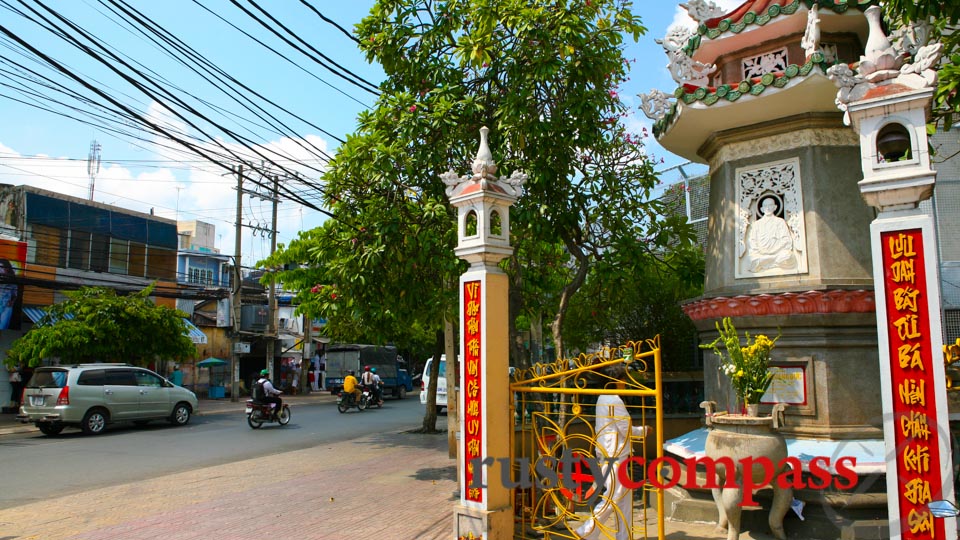
Photo: Mark BowyerThe original Thich Quang Duc memorial, Saigon.
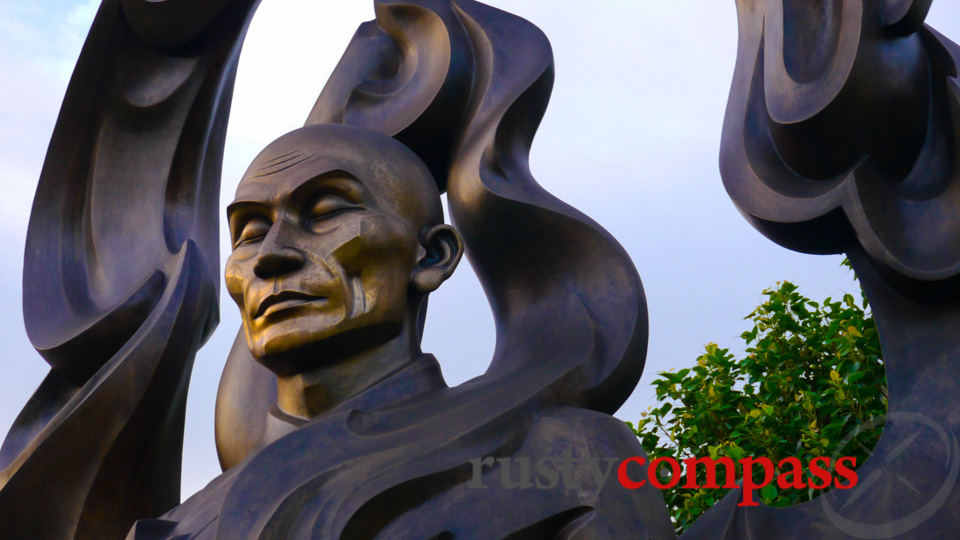
Photo: Mark BowyerThe new Thich Quang Duc monument, Saigon
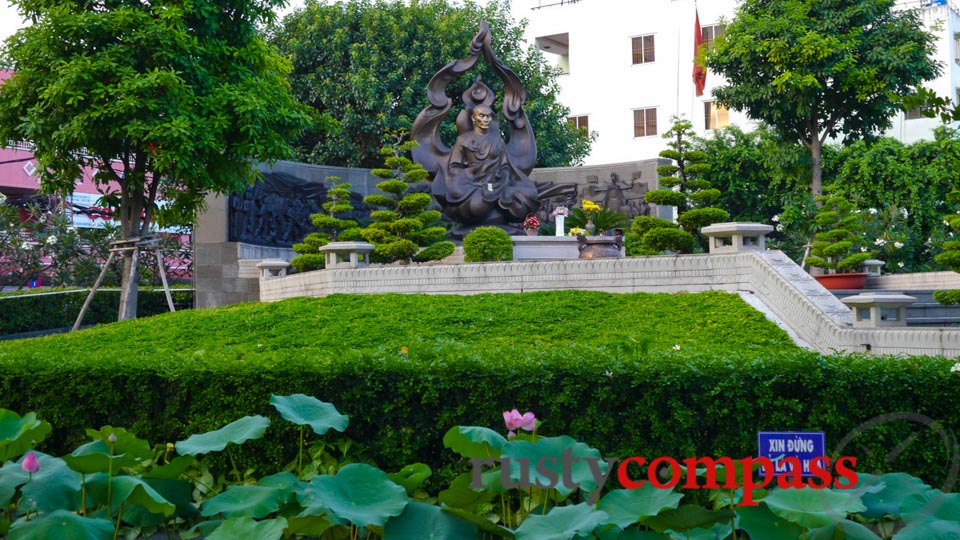
Photo: Mark BowyerNew and much expanded Thich Quang Duc monument, Saigon
Xa Loi Pagoda
Xa Loi Pagoda, the scene of so much action 50 years ago now sits discreetly, also in District 3, nearby some of the city's most impressive colonial architecture, in various stages of disrepair.
It's here that Ngo Dinh Nhu's forces beat, arrested and killed monks protesting the discriminatory policies of Ngo Dinh Diem's government.
Neil Sheehan, David Halberstam and Peter Arnett were all witnesses and their experiences and the whole 1963 Saigon situation is excellently captured in William Prochnau's book Once Upon a Distant War.
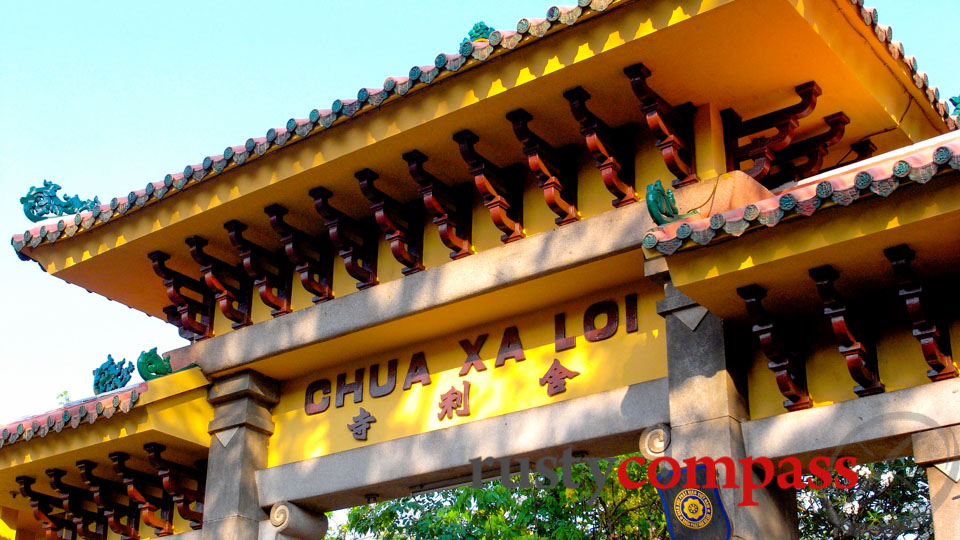
Photo: Mark BowyerXa Loi Pagoda, Saigon
Former Gia Long Palace
The final residence of President Ngo Dinh Diem was the Gia Long Palace - now the Ho Chi Minh City Museum on Ly Tu Trong St. It was here that the troops and tanks of the coup against him assembled in November 1963. With his brother Ngo Dinh Nhu, Diem fled to Cha Tam Church in Cholon.
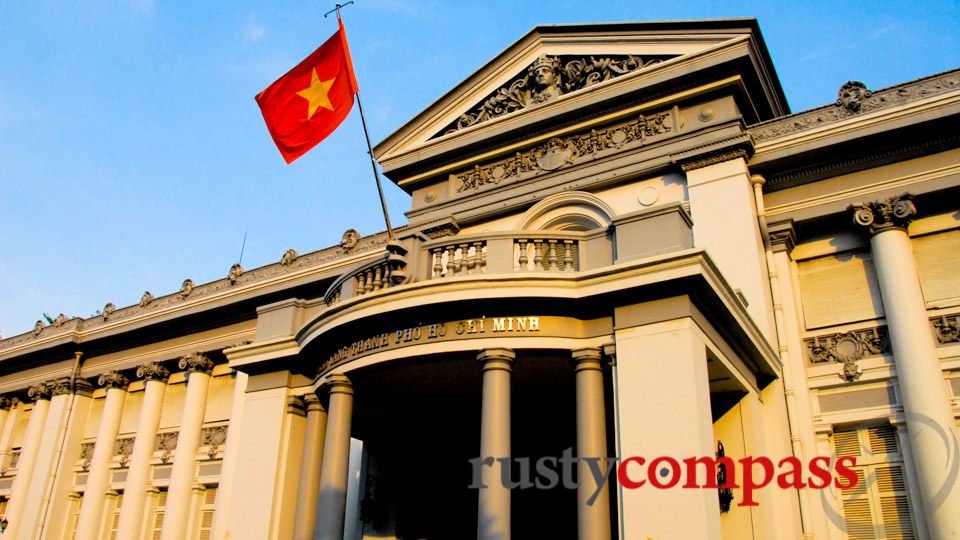
Photo: Mark BowyerFinal residence of Ngo Dinh Diem before the 1963 coup.
Cha Tam Church - Cholon
President Ngo Dinh Diem and his brother Ngo Dinh Nhu spent their final desperate hours in the pews of Cha Tam Church in Saigon's Cholon or Chinatown district. They were captured here and murdered on the way back downtown. To this day, I don't know for sure where they're buried. Some say they're in a cemetery in Binh Duong.
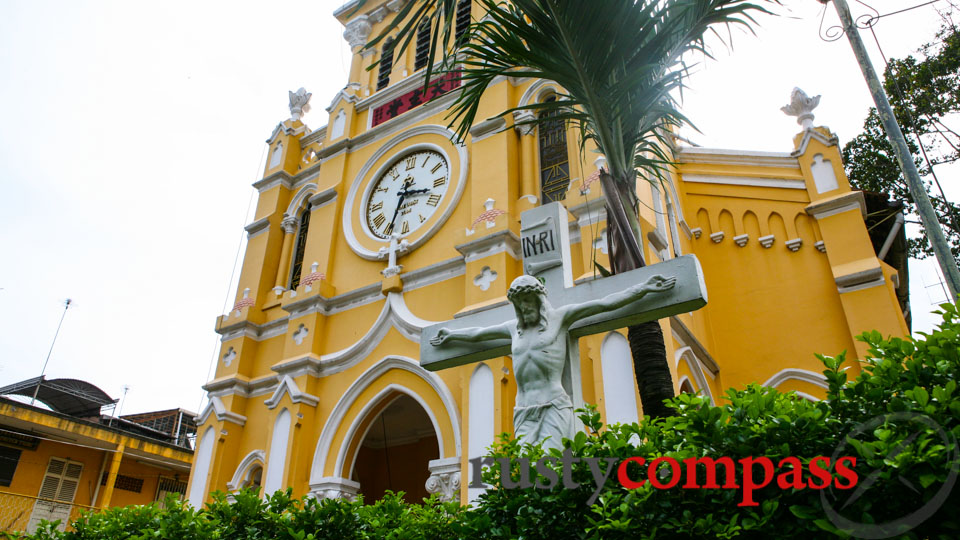
Photo: Mark BowyerCha Tam Church. Cholon.
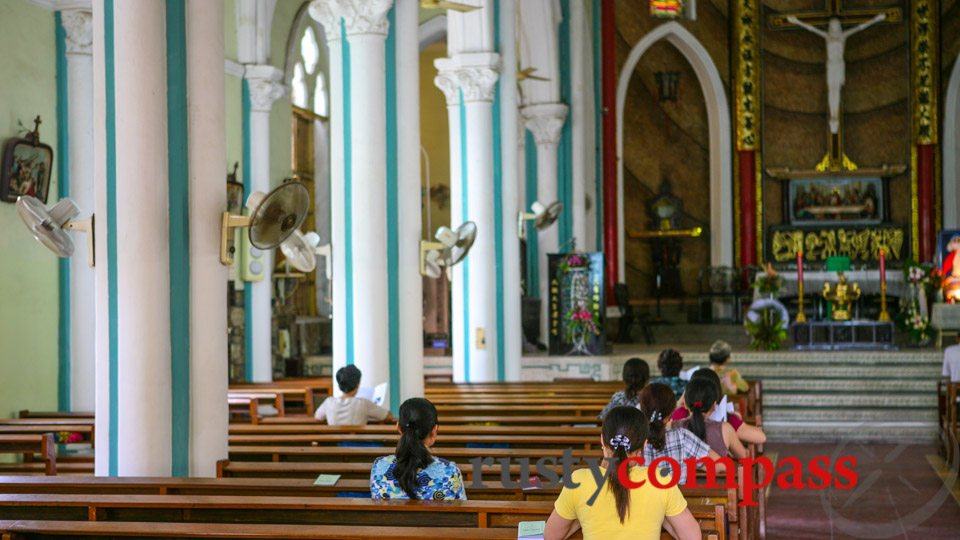
Photo: Mark BowyerNgo Dinh Diem and Ngo Dinh Nhu took final refuge at Cha Tam Church.
Rusty Compass operates Vietnam by the Book twice per year, an in-depth tour of Vietnam’s history, culture and stunning places through our travel company Old Compass Travel. The tour is based around 3 books - click here for more on Vietnam by the Book

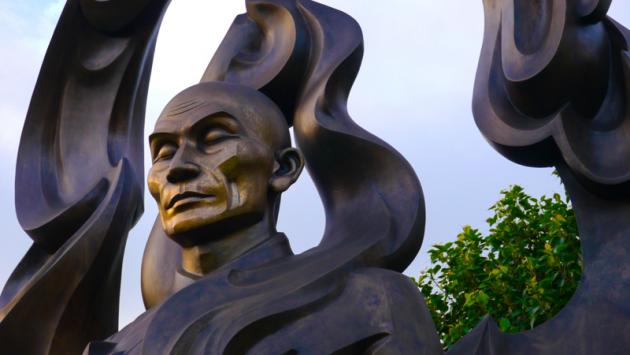



1 comment so far
Though portrayed as a staunch Anti communist (which helped secure US support) Diem supposedly spent more time and money subjugating the less threatening religious sects/warlords of southern Vietnam. The Coa Dai and Hoa Hoa were included along with the Buddhist. I seem to recall the 4 or 5 others may have been exterminated then too. It would be really cool to find out what happened to them! I am sure there a few ancient hold outs around somewhere to discover.